Remember when everything seemed to have a weird texture or that unmistakable smell of fresh-from-the-factory plastic? The ’70s were a magical time when we didn’t question why our favorite toys felt sticky after five minutes or why our bedroom decor shed like a golden retriever. We just rolled with it because these items brought us pure joy, even if they left mysterious residue on our fingers or required constant lint-rolling.
1. Shag Carpeting
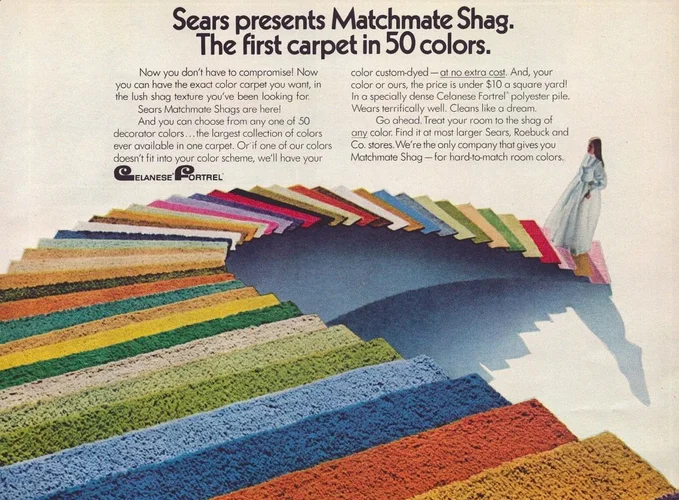
That luxurious wall-to-wall shag carpeting was the ultimate status symbol, whether it was harvest gold, burnt orange, or that unforgettable avocado green. You could lose small pets in those three-inch fibers, and finding a dropped earring was like searching for buried treasure. The texture was somewhere between a sheep’s back and a dish scrubber, but boy, did it feel fancy under your bare feet.
Vacuuming shag was an Olympic sport that required special techniques and the right equipment. The carpet held onto everything—crumbs, pet hair, and mysterious particles that seemed to multiply overnight. But when you raked those fibers just right, it looked like something straight out of a home decorating magazine, and that was worth all the maintenance hassles.
2. Pet Rocks
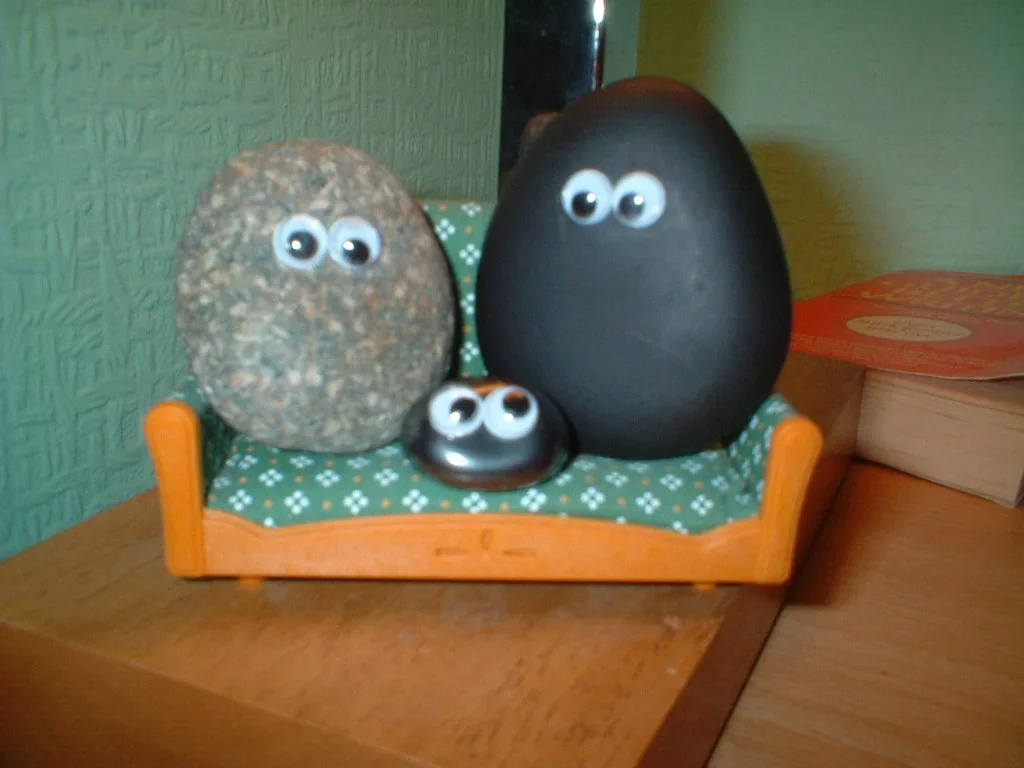
The Pet Rock phenomenon of 1975 proved we’d literally fall in love with anything, even if it was just a smooth stone with googly eyes glued on. These “pets” came in their own little cardboard carriers with air holes (because rocks need to breathe, obviously) and instruction manuals for care and training. The whole concept was delightfully absurd, but somehow we all wanted one of these silent, low-maintenance companions.
The rocks themselves had that particular texture of being handled by countless factory workers and shipped in boxes that smelled like cardboard and industrial adhesive. The googly eyes would inevitably fall off after a few weeks, leaving behind a sticky residue that attracted lint and dust. But even a bald Pet Rock still had personality, sitting there on your dresser like a tiny, judgmental friend.
3. Vinyl Bean Bag Chairs
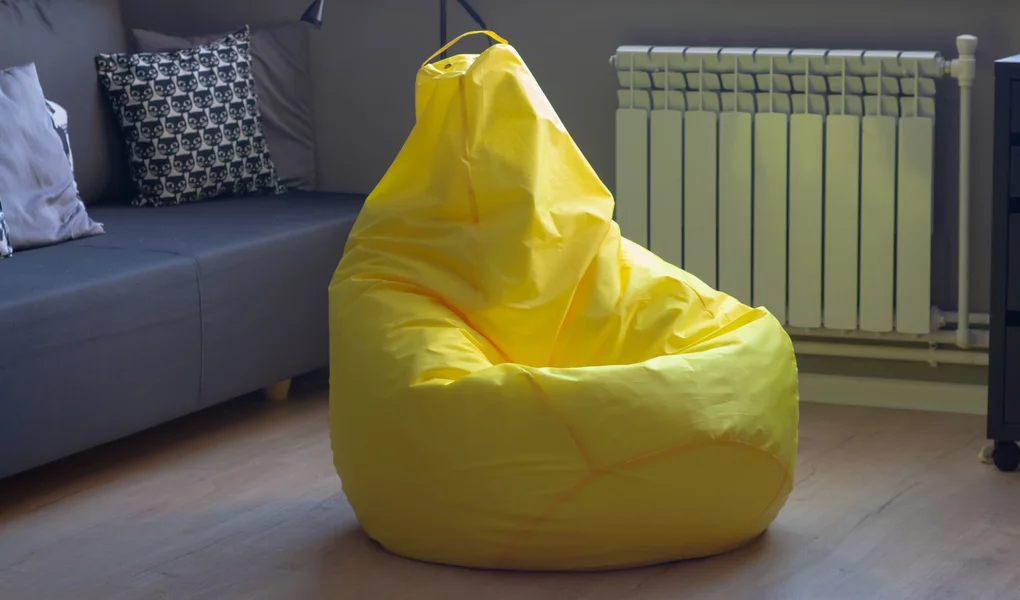
Bean bag chairs were the ultimate in ’70s casual furniture—perfect for watching TV, reading, or just flopping down after a long day. The vinyl exterior had that distinctive plasticky smell and would stick to your skin on warm days, making that embarrassing peeling sound when you tried to get up. They came in every color imaginable, from electric blue to sunshine yellow, and somehow managed to match absolutely nothing else in your room.
The little styrofoam beads inside had a mind of their own, slowly migrating to create permanent body impressions and flat spots. If you were unlucky enough to have one with a small tear, those beads would escape like tiny white prisoners, showing up in the weirdest places for months afterward. Despite their quirks, these chairs molded perfectly to your body and made you feel like you were living in the future.
4. Fuzzy Dice
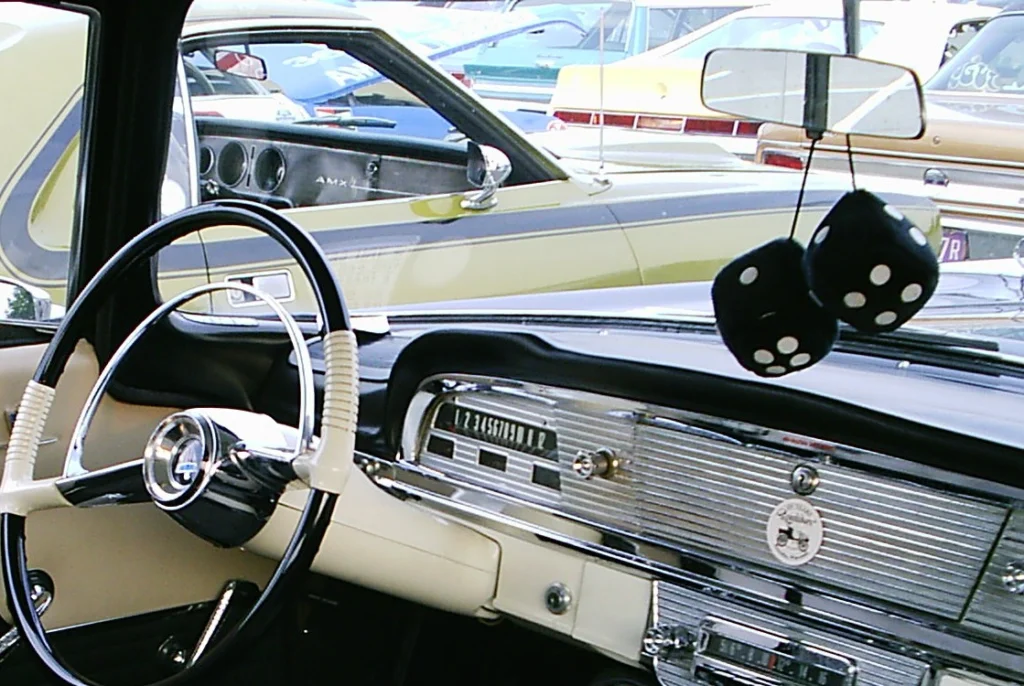
Hanging a pair of oversized fuzzy dice from your rearview mirror was the ultimate car accessory, whether you drove a muscle car or your mom’s station wagon. These weren’t just any dice—they were covered in synthetic fur that shed constantly and came in colors that nature never intended. The fuzz would get matted down from handling, and they’d collect dust and car freshener residue like tiny, cubical lint traps.
The elastic cord that held them together would stretch out over time, making them hang at weird angles that blocked your view of important things like traffic lights. On hot summer days, the synthetic fur would hold onto heat and develop its own unique aroma that mixed with whatever else was going on in your car. But they were your dice, and they announced to the world that you were cool enough to have something completely impractical dangling from your mirror.
5. Weebles
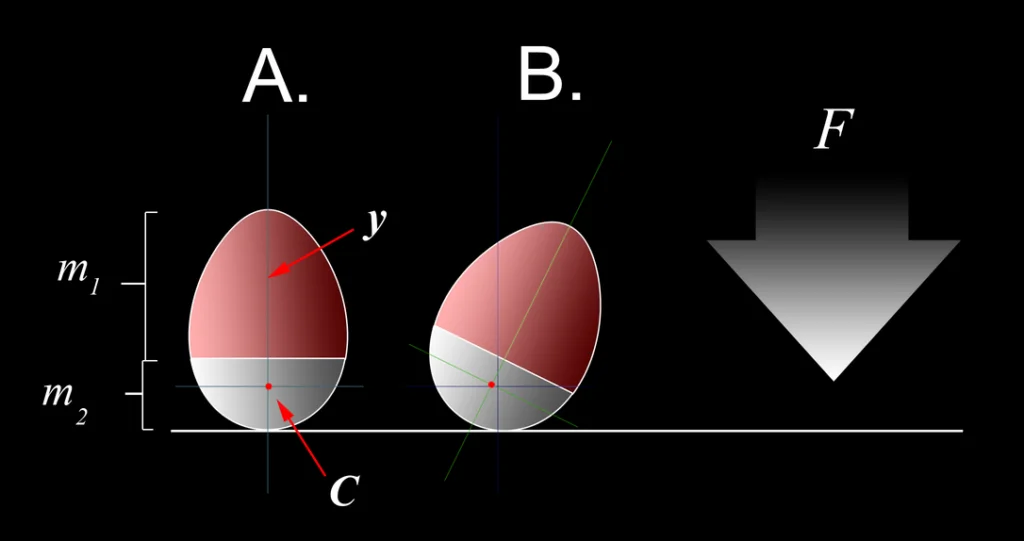
“Weebles wobble but they don’t fall down” became the catchphrase of a generation, and these egg-shaped little people were impossible to resist. Their smooth, slightly tacky plastic surface was perfect for tiny hands, though they’d pick up every bit of lint, pet hair, and mystery debris from wherever they rolled. The bottom-heavy design meant they’d right themselves no matter how hard you knocked them over, which was both fascinating and slightly unnerving.
The playsets that came with Weebles had that same sticky-sweet plastic smell that all the best toys seemed to have back then. Whether it was the Weebles House, the Marina, or the Haunted House, these environments felt substantial and real, even if they left your hands smelling like a toy factory. You could spend hours creating elaborate Weeble adventures, and somehow these simple, wobbling figures had more personality than toys three times their size.
6. Silly Putty
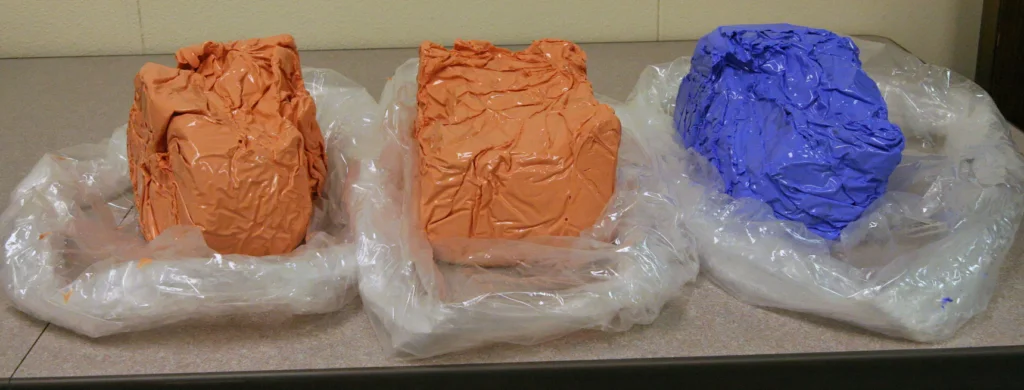
That flesh-colored blob of synthetic rubber was pure magic in a plastic egg, capable of copying newspaper comics, stretching to impossible lengths, and bouncing in ways that defied physics. The putty had a unique texture that was somehow both firm and yielding, and it would pick up lint, hair, and debris like a magnet. After a few play sessions, your Silly Putty would be speckled with tiny fibers and have lost some of its pristine pink glow.
The real magic happened when you pressed it against the Sunday comics and peeled it back to reveal a perfect mirror image of your favorite characters. The transferred ink would gradually fade, but for those first few minutes, you felt like you’d discovered some kind of scientific breakthrough. It would also stick to itself, stretch until it snapped, and create the most satisfying bouncing ball when rolled into a sphere.
7. Macramé Everything
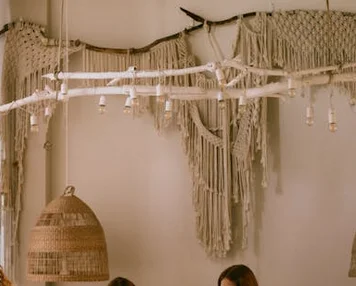
Macramé plant hangers, wall hangings, and purses were everywhere in the ’70s, turning homes into forests of knotted rope and cord. These handcrafted pieces had that rough, natural texture that would catch on jewelry and leave tiny rope fibers on your clothes. The jute and hemp cords used in most macramé projects had an earthy smell that was either charmingly rustic or mildly overwhelming, depending on your tolerance for natural fiber aromatics.
Every macramé creation seemed to be a dust magnet, with all those loops and knots providing perfect hiding spots for particles that regular cleaning couldn’t reach. The plant hangers would slowly stretch under the weight of their pots, creating increasingly dramatic swoops and curves. But there was something deeply satisfying about these handmade touches that brought warmth and texture to otherwise stark modern furniture.
8. Hot Pants

These ultra-short shorts were the height of fashion, usually made from synthetic materials that had interesting relationships with static electricity and body heat. The polyester blends and other miracle fabrics of the era would cling in unexpected ways and develop their own microclimate that wasn’t always pleasant. They came in every color and pattern imaginable, from metallic gold to wild prints that seemed to vibrate with their own energy.
The synthetic materials would pill and develop a slightly fuzzy texture after a few washes, and the colors would fade in fascinating ways that created tie-dye effects nobody planned. On hot days, these shorts could become uncomfortably sticky, and on cold days, they provided about as much warmth as tissue paper. But they made everyone feel fashionable and daring, even if the comfort level was questionable.
9. Lava Lamps
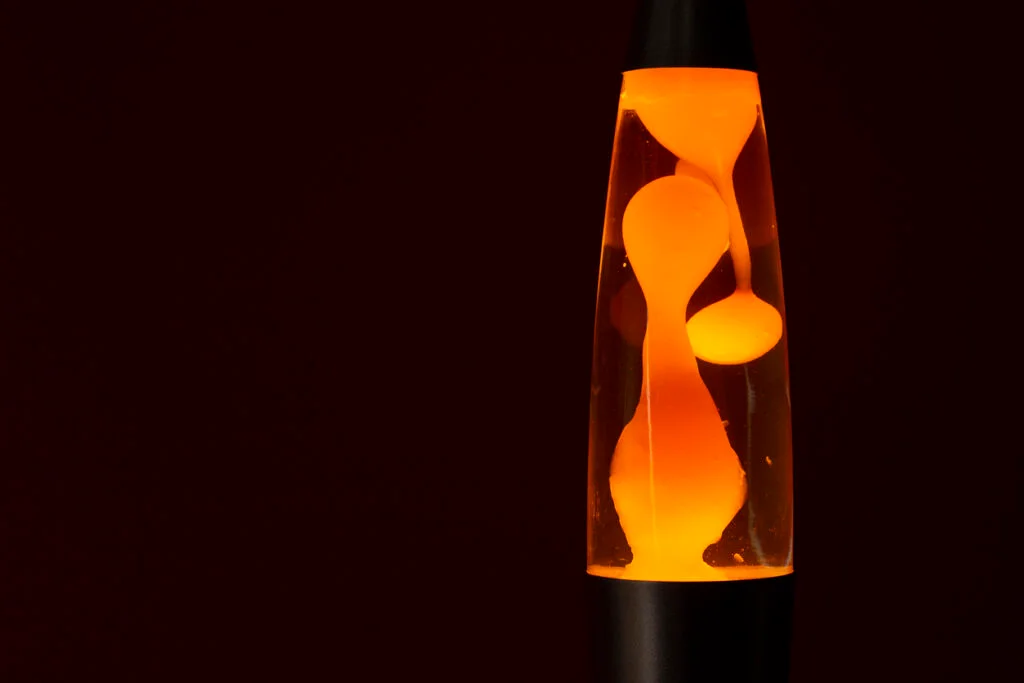
The mesmerizing blob of colored wax floating in liquid was hypnotic entertainment that could keep you staring for hours. These lamps had a distinctive metallic base that would get warm to the touch and develop its own particular smell when heated—part electrical, part mystery. The glass globe would collect fingerprints and dust, but somehow that just added to the psychedelic ambiance.
Getting the wax to flow properly was an art form that required patience and the right room temperature. Sometimes the blob would break into multiple smaller blobs, creating an even more interesting light show but making perfectionists slightly crazy. The whole lamp had a slightly oily feel to it, and if you were unlucky enough to break one, the cleanup was a nightmare that involved scraping waxy residue off everything within a three-foot radius.
10. Plastic Inflatable Furniture

Clear plastic chairs and sofas were the ultimate in space-age furniture, even if they made embarrassing squeaking sounds every time you moved. The vinyl had that fresh-from-the-factory smell and would stick to bare skin in warm weather, creating interesting sound effects when you tried to change position. These pieces were supposed to be the future of furniture—lightweight, easy to clean, and completely see-through.
The biggest challenge was keeping them inflated without developing permanent creases or that slightly deflated look that made them seem sad and tired. They’d collect static electricity and attract every piece of lint and dust in the room, requiring constant wiping down with anti-static spray. But when they were properly inflated and positioned in just the right light, they looked like something from a science fiction movie.
11. Polyester Clothing
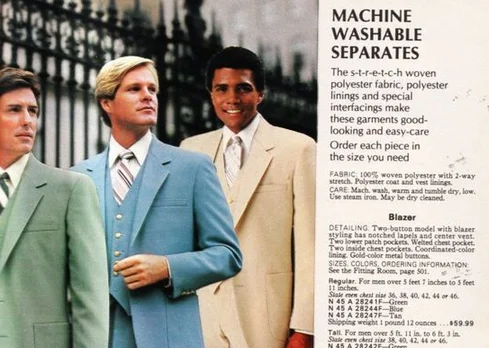
Polyester was the miracle fabric that promised to make ironing obsolete and keep you looking sharp all day long. These clothes had a distinctive texture that was somehow both slippery and clingy at the same time, and they’d develop their own weather system in warm conditions. The colors were impossibly bright and saturated—oranges that could be seen from space and blues that made your eyes water.
The static electricity generated by polyester could power small appliances, and the fabric would cling to itself in ways that created interesting silhouettes nobody intended. After a day of wear, polyester would hold onto odors like a fabric memory bank, preserving every environment you’d passed through. But these clothes kept their shape, resisted wrinkles, and made everyone feel like they were living in the future, even if that future was occasionally a bit sticky.
12. Plastic Fantastic Record Albums
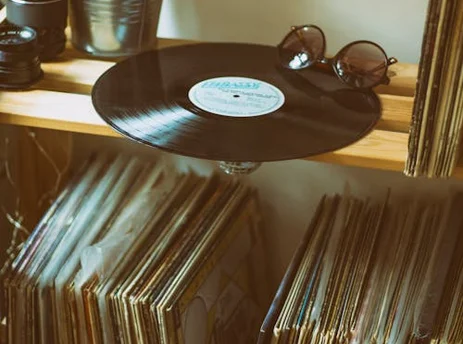
Those thin, flimsy records that came with cereal boxes or as promotional items were treasures despite their questionable audio quality. The plastic was so thin you could practically see through it, and it would warp if you left it in a warm car for five minutes. These records had a distinctive smell and texture—slightly oily and definitely not meant for repeated play on your good turntable.
The sound quality was somewhere between a transistor radio and a telephone, but somehow that just added to their charm. They’d attract dust and scratches just from being looked at, and playing them often resulted in more surface noise than actual music. But they were YOUR records, often featuring exclusive content or kiddie versions of popular songs, and they represented a special kind of musical democracy where everyone could have their own vinyl collection.
Looking back, it’s amazing how much we loved these imperfect, sticky, smelly, fuzzy things that would probably horrify today’s quality-control departments. Maybe it was because they felt real and handmade in a world that was rapidly becoming more automated, or maybe we just had lower expectations for tactile experiences. Either way, these wonderfully flawed items shaped our childhoods and gave us stories we’re still telling decades later, even if we can’t quite remember why we thought fuzzy dice were such a good idea.
This story 12 ’70s Things That Were Always Fuzzy, Sticky, or Smelled Like Plastic—but We Loved Them Anyway was first published on Takes Me Back.


